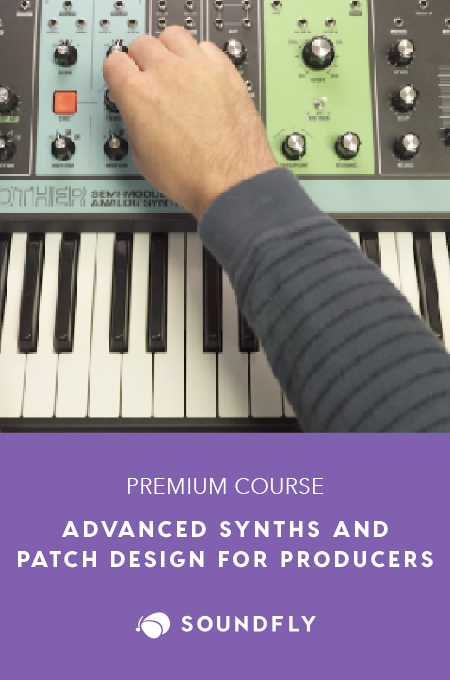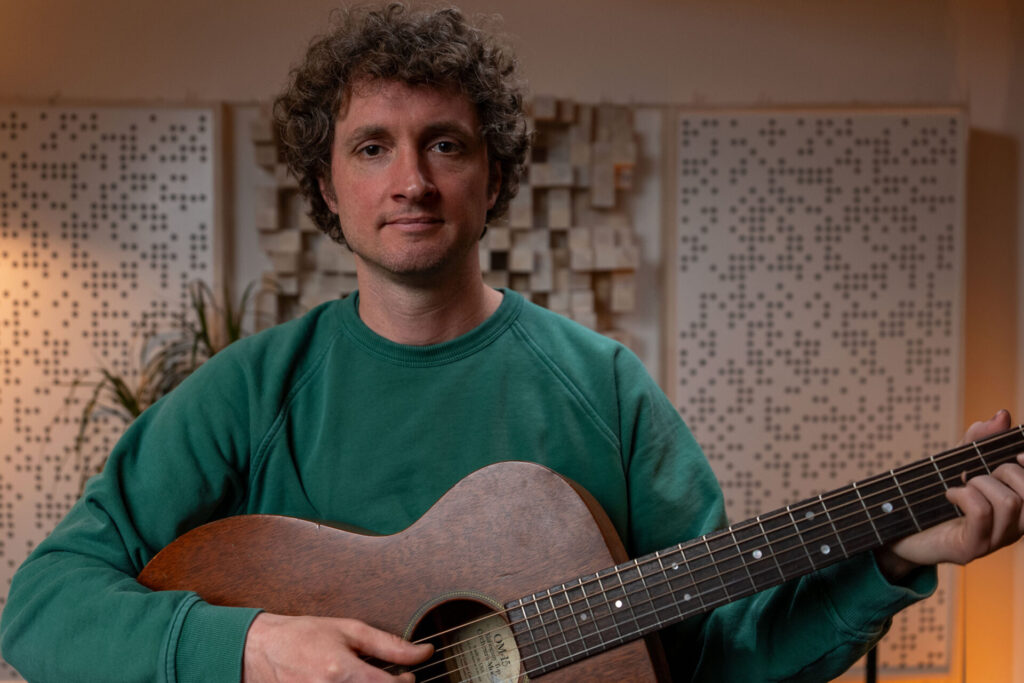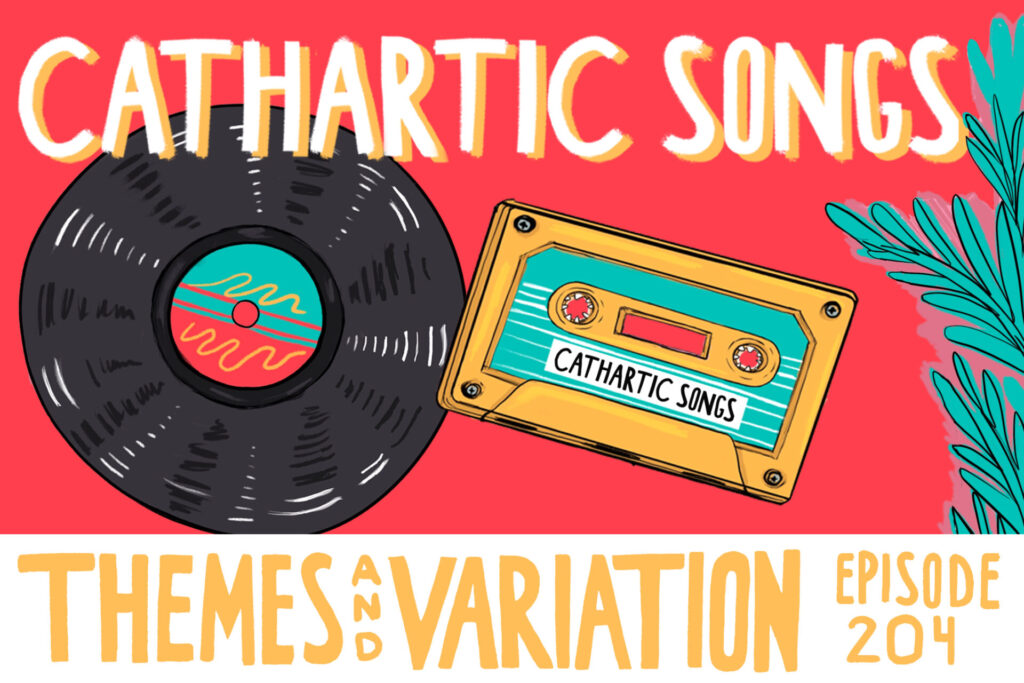+ Learn to craft more compelling beats and warped, broken rhythms with Son Lux’s Ian Chang. His innovative course is out now on Soundfly.
Throughout my examination of the wide world of musical electronics, I’ve gazed longingly at the spider-web patches of modular and done an in-depth analyses of notable synths and their inner workings. One area we haven’t investigated deeply is the intersection of acoustic instruments with the electronic world — specifically, the burgeoning intersection of “classical,” or solo concert instrumentalists, and electronic processing.
Electronic music and innovative new approaches to composition and orchestral performance are both undeniably seeing a kind of renaissance at the moment in the live music sphere. Bringing these two generic spaces together can result in the melding of styles ranging from ambient to avant-garde, and techno to soundtrack music, not to mention new hybrid forms of music we’ve never heard before!
So in this piece, let’s take a look at the increasingly varied ways that musicians are fusing traditional, acoustic instruments with the virtually limitless world of live electronics, whether conceived solo or in collaboration.
Immix Ensemble & Vessel
Our first intersection is a collaboration between Immix Ensemble, in this case helmed by composer Daniel Thorne, and Vessel, a prolific industrial producer. We’ll see a few more collaborations throughout this list, and that’s no coincidence: Often, the most interesting intersection of electronic and acoustic come from the intersection of ideologies and personalities.
In this instance, the artists looked at acoustic instruments as technology in need of an update — that is, how could a saxophone, whose design is inherently stationary, be forcefully catapulted into the 21st century? And how do you recognize its past and place in time while doing so? Not long after the saxophone was invented came the telegraph — marking a huge shift in expression and communication. These artist work together to capture that transition. The result is at times bombastic, but often the flutter of the saxophone is augmented with digital sparks, creating an atmosphere that hints at solo virtuosity, yet keeps it shuttered behind an altogether novel sonic veil.
+ Read more on Flypaper: “Loud Silence and Quiet Sound — The Illuminating Music of Toru Takemitsu”
Otto Lindholm
In many ways, Otto Lindholm came to electronics and live looping as a pure classical arranger. Though he now performs solo with double bass and electronics, Lindholm uses the electronic elements to represent a live symphony, with intertwining elements, parts, and harmonies — albeit one he can create on the spot with specific selections of gear that are natural extensions of the instrument he’s played for so long.
Ultimately, it’s a maturation out of pure, solo performance. Lindholm says of his work, “I was looking for a personal analogic set-up, an extension of my double bass, so to speak. This setup had to give me freedom and ergonomics in my creativity and at the same time, sufficient complexity in terms of production and playing… After that, this album developed intuitively out of an organic dialogue between the double bass and the machines.”
Alva Noto & Ryuichi Sakamoto
To those just starting to exploring the classical-electronic intersection, this collaboration provides perhaps the most immediate entry point. And to many listeners of the electronic avant-garde and new classical music, these names are already paramount in the space. This is a well-documented collaboration between two giants of their craft. Ryuichi Sakamoto has written some of the most compelling orchestral and solo piano compositions of late, from his score to The Revenant, to a double piano collaboration with a MIDI-triggered Yamaha grand. Throughout his career, he has bounded across the electronic music spectrum, producing wily synthesizer themes and some of the first video game music with his group the Yellow Magic Orchestra. Here, Sakamoto finds a kindred spirit in Alva Noto, né Carsten Nicolai, a digital artist of sound, light, and sculpture who has shown and performed in museums all over the world.
In the above video, Sakamoto performs on an acoustic piano which Noto, across stage, processes to create generative visualizations and all kinds of spacious, glitching sounds from split seconds of trapped signal. Together, the combination of resonant piano chords and the ticking pulses of pure data paint emotional pictures listeners can’t find anywhere else. Together, the duo has released several albums exploring this emotive terrain, pushing the limits of Noto’s advanced, custom-built computer processing.
Todd Reynolds
Todd Reynolds is a veteran of the avant-garde scene, having once been a part of the legendary Bang on a Can All-Stars and performed under Steve Reich, Meredith Monk, and others. He also founded the influential string quartet Ethel. In his solo performances, he makes use of violin and digital electronics, and engages in what Reynolds calls “present music” — that is, his compositions and pre-recorded loops are structured to allow for maximal interface with the space and audience, live and in the moment. Ultimately, Reynolds manages to blend folk influences with minimalism and modernism, and filter them through the immediacy of reactionary electronic processing and pre-composed backing tracks, not unlike live digital pioneers such as Ikue Mori and R. Luke DuBois. But the tech is beyond me, it’s a combination of Ableton Live, samplers, iPad processing and random patches triggered any number of ways. His live set up even kind of looks like your company’s IT guy brought his violin to work one day…
Oh and remember when we talked about collaboration being an unpredictable melding of ideologies and personalities that leads to inventiveness? Here’s Todd Reynolds waxing poetic on collaborating with the ensemble Mother Falcon.
Anna Meredith
Though Anna Meredith has arguably transcended this particular stylistic genre with her latest album, which many consider pop, Meredith’s roots are squarely in the electroacoustic avant-garde. Though she’s one of the most highly acclaimed modern British composers, her band still consists of clarinet, two cellists, a guitarist, a tuba, and a drummer… and enough electronic processing power to turn drum hits into oceans of color. Indeed, much of her work is rooted in the operatic tradition, and features arrangements for visuals alongside orchestrations utilizing everything from beatboxers to full orchestras.
Julia Kent
Julia Kent stands among the forefront of musicians experimenting with laptop electronics, live looping, and solo stringed instrument. While tethered to the idea of keeping her solo cello at the melodic center of her music, her virtuosic on-stage looping and layer-building brings a warm, digital tonality to play alongside it. In the past, Kent has explored the intersection of ambient textures and field recordings to fill out the sonic spaces in her layered cello compositions, in keeping with the traditions of musique concrète.
Though these days she’s adding beats and tightly produced electronic soundscapes with the same level of mastery she brings to her instrument. For Kent, this intersection has proved to be a successful pairing. Kent’s touring cello is a piece of advanced technology as well, made entirely of black carbon fiber.
For Julia Kent’s own perspective on her work and creative vision, check out our exclusive interview with her from last year!
Patrick Higgins
Guitarist, composer, and recording engineer Patrick Higgins is constantly reaching deeper and deeper towards a burning core of innovation in composition, which often includes incorporates electronic tracks and reactionary processing. But not always. His interest in data, science, and the language of codes leads even his acoustic compositions for piano, string quartet, and chamber ensembles down a road paved by chance, grid-plotted coordinates, and conceptual theory.
The above track, however, flows in a different direction. Here, Higgins prepares a series of J.S. Bach’s compositions to be performed on solo guitar with custom-designed stereo electronic processing and recaptured room reverb. For the record this song appears on, Bachanalia, Higgins shacked up in two different churches to capture the perfect acoustic contours.
For even further rabbit hole traveling, Higgins’ avant-garde trio Zs, a shapeshifting band led by New York staple Sam Hillmer, makes use of electronic processing (of both saxophones and drums, in addition to the guitar) and complex approaches to composition as if it’s second nature.
Vicky Chow & Tristan Perich
Perhaps because of the piano’s immediacy and intimacy, or because of its ability to cover the majority of the sonic range, or perhaps even because it’s so easy to mess with the resonance of the piano’s durable strings, it is one of the most frequently utilized acoustic instruments in pairings with electronics. I mean, an entire article could just be written solely on that, from Nicholas Bernier to Nils Frahm, Ludovico Einaudi and Bruno Sanfilippo and everything in between.
But pianist Vicky Chow and 1-bit composer Tristan Perich‘s collaboration on Surface Image is something else. Particularly unique here are not only Perich’s army of 40 hand-wired and programmed 1-bit speaker-amplified electronics, but also the way his composition blurs the lines of where the acoustic and electronic sounds are coming from. Chow’s performance of this piece, flawless and deeply tuned into the subtleties of space and texture, brings out just how fragile those lines can be. At times, she pounds the chords and asserts her sentient power over the humble hanging speakers, and in other moments she holds back, ringing notes out in the tiny octave window of the 1-bit synthesizers to create an ant-like conversation of miniature voices, indistinguishable from each other. It’s hard to imagine a more interconnected interface.
Don’t stop here!
Continue learning with hundreds of lessons on songwriting, mixing, recording and production, composing, beat making, and more on Soundfly, with artist-led courses by Kimbra, Com Truise, Jlin, Kiefer, and the new Ryan Lott: Designing Sample-Based Instruments.




